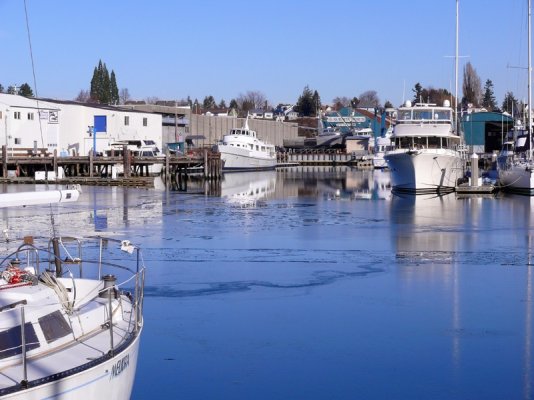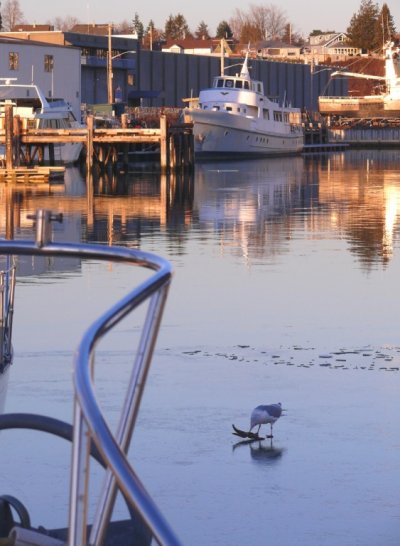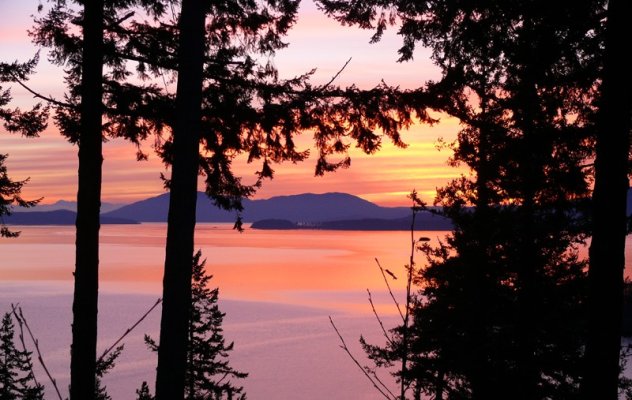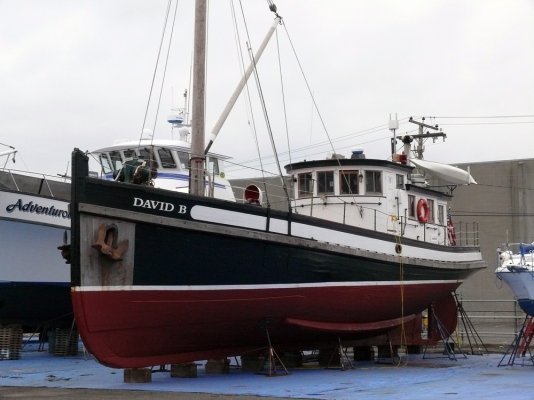Planned to take the boat last weekend to a bay we'd not visited before.* Got the boat ready, warmed it up, got halfway out of the slip and could go no farther.* There was a bit over 1/4" of ice on the surface of much of the marina.* No problem for a boat going forward through it but it stopped our boat dead trying to back through it.* It's amazing how strong ice can be.* Plus the crunching of the ice against the hull made a horrible sound and, as it turned out, took some of the bottom paint off the transom (we're having the bottom repainted in a month or so anyway so that didn't matter).* But we've been told and have seen in the past the evidence of what even very thin ice can do to gelcoat as a boat cuts through it so we decided to forget it and pulled the boat back into its slip.* We'll visit the bay next time out.
In the first shot the north wind had cleared the ice out of the inner harbor but it never go the ice out of our section.
I realize the sight of a gull eating a starfish while standing on top of the water is no big deal to people in New England and the Maritimes but it's something we almost never see out here.
The third shot is looking out into the San Juan Islands with the Olympics in the distant background.*
Our marina has a good size stream that empties into it so the surface water is very often almost completely fresh which encourages the formation of ice if it stays below freezing for several days in a row.* In the twelve years we've had the boat this is only the second or third time this has happened.* The frustrating thing was the weather this past weekend was perfect--- virtuallly no wind.* So it would have been beautiful out in the islands.
In the first shot the north wind had cleared the ice out of the inner harbor but it never go the ice out of our section.
I realize the sight of a gull eating a starfish while standing on top of the water is no big deal to people in New England and the Maritimes but it's something we almost never see out here.
The third shot is looking out into the San Juan Islands with the Olympics in the distant background.*
Our marina has a good size stream that empties into it so the surface water is very often almost completely fresh which encourages the formation of ice if it stays below freezing for several days in a row.* In the twelve years we've had the boat this is only the second or third time this has happened.* The frustrating thing was the weather this past weekend was perfect--- virtuallly no wind.* So it would have been beautiful out in the islands.




